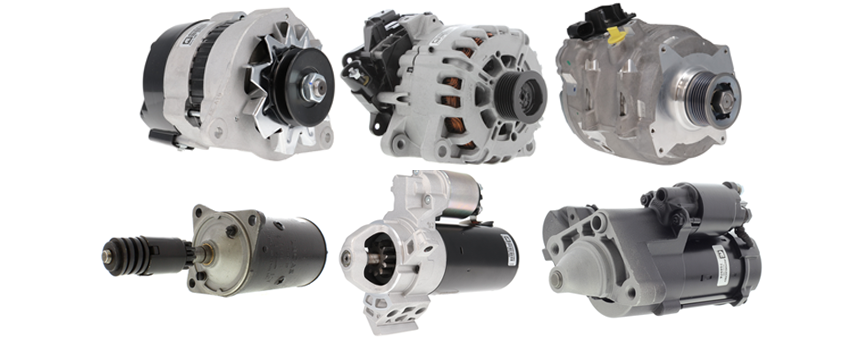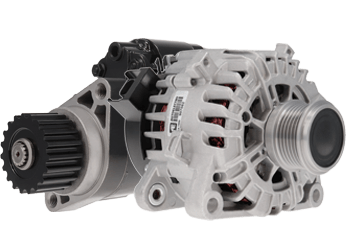The Evolving Relationships Of Parts
Autoelectro UK’s Sales Manager, Nick Hood, outlines the evolving partnership between battery, Starter Motor and Alternator.
The relationship between the vehicle battery, Starter Motor and Alternator is a longstanding one that is generally understood. However, if the last decade is anything to go by, with the advancing electrical systems, driver aids and functions seen in modern cars, such as start-stop, this relationship is as crucial as ever. All three parts have been part of an era of significant technological advancement to improve their use and performance, to accommodate new demands on the modern vehicle.As the winter season approaches, a time when the demands placed on the components increase, this season could see more vehicles back out on the road after a period of infrequent use, which, in many instances, could lead to poor or low battery condition.
A deteriorating battery has implications for the Starter Motor and Alternator, which can be worsened by the arrival of cold weather. A frosty morning, coupled with low battery condition, can cause prolonged cranking to start the vehicle, something that a modern geared Starter Motor is not built for and can easily result in the Starter Motor burning out.
Switching to the Alternator, it is wise to remember its proper function: maintaining battery condition, whilst running the vehicle’s electronic systems; it is not designed to charge a flat battery, and it can struggle to recover a partcharged battery.
Both of these scenarios can result in the Alternator being in constant use and demand – something it will struggle to cope with. If an Alternator is working beyond its capacity, it will, inevitably, get hot and the heat generated can blow the regulator and/or rectifier. As the winter season looms, therefore, technicians should ensure they’re passing on best practice tips to their customers, which will not only protect the vehicle’s battery, but will avoid Starter Motor and Alternator issues as well.The original article was published by PMM and can be found here: The Evolving Relationships Of Parts
- December 2025
- November 2025
- October 2025
- September 2025
- August 2025
- July 2025
- June 2025
- May 2025
- April 2025
- March 2025
- February 2025
- January 2025
- December 2024
- November 2024
- October 2024
- September 2024
- August 2024
- July 2024
- June 2024
- May 2024
- April 2024
- March 2024
- February 2024
- January 2024
- November 2023
- October 2023
- September 2023
- August 2023
- July 2023
- June 2023
- May 2023
- April 2023
- March 2023
- February 2023
- January 2023
- December 2022
- November 2022
- October 2022
- September 2022
- August 2022
- July 2022
- June 2022
- May 2022
- April 2022
- March 2022
- February 2022
- January 2022
- December 2021
- November 2021
- October 2021
- September 2021
- August 2021
- July 2021
- June 2021
- May 2021
- April 2021
- March 2021
- February 2021
- January 2021
- December 2020
- November 2020
- October 2020
- September 2020
- August 2020
- July 2020
- June 2020
- May 2020
- April 2020
- March 2020
- February 2020
- January 2020
- December 2019
- November 2019
- October 2019
- September 2019
- August 2019
- July 2019
- June 2019
- May 2019
- April 2019
- March 2019
- February 2019
- January 2019
- December 2018
- November 2018
- October 2018
- September 2018
- August 2018
- July 2018
- June 2018
- May 2018
- April 2018
- March 2018
- February 2018
- January 2018
- October 2017
- August 2016
- July 2016
- May 2016
- November 2015
- April 2014
Find Your Vehicle


Contact Us
-
Nirmalec House
848 Leeds Road,
Bradford,
West Yorkshire,
BD3 9TU - Opening Times: Mon - Fri: 08:00 - 17:00
- Email: sales@autoelectro.co.uk
- Tel: +44(0)1274 656101 *
- WhatsApp: +44(0)7972 804336
Useful Links
* Calls are recorded for training and quality purposes



